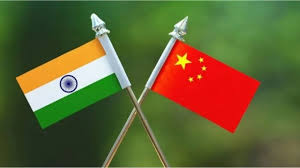As of my last knowledge update in January 2022.
there were 49 countries in Asia. However, geopolitical changes may occur, so it is a good idea to verify current numbers from a reliable source for the latest information. As of my last update in January 2022, Asia is the largest continent and home to a wide variety of cultures, languages, and landscapes. The countries of Asia vary widely in terms of size, population, and economic development. Some of the world's most populous countries, such as China and India, are located in Asia. The continent also includes countries with rich history, ancient civilization and modern economic powers. Asia is known for its geographical diversity, which includes vast deserts, dense forests, high mountain ranges and fertile plains. The continent is divided into several subregions, including East Asia, Southeast Asia, South Asia, Central Asia, and West Asia (often referred to as the Middle East). Each subregion has its own unique characteristics and plays an important role in shaping the overall diversity of Asia.The countries of Asia collectively contribute to global politics.
economics and cultural exchange. The region has been a center of trade and cultural relations for centuries, promoting the exchange of ideas, goods and technologies. Today, Asia remains a dynamic and influential part of the world, with ongoing developments in various sectors contributing to its importance on the global stage. The economic importance of Asia on the global stage has increased significantly in the last few years. Many Asian countries such as China, Japan, South Korea and India are major players in the world economy. The region is known for its technological advancements, manufacturing capabilities, and emerging markets.
Apart from economic power.
Asia is home to a rich tapestry of cultures and traditions. The diversity of languages, religions, and customs in Asia reflects its historical and geographical complexity. From the ancient civilizations of Mesopotamia and the Indus Valley to the modern metropolises of Tokyo and Beijing, the continent encompasses a wide range of human experiences. Asia also faces various challenges, including environmental issues, geopolitical tensions and socio-economic inequalities. Rapid urbanization and industrialization have given rise to environmental concerns, while political tensions exist in various parts of the continent. Efforts to address these challenges involve cooperation between Asian countries and the international community.Asia has been at the forefront of scientific and technological progress.
Countries in the region have made significant contributions in areas such as space exploration, medicine and information technology. The continuous pursuit of knowledge and innovation is shaping Asia's role in the global scientific community. In conclusion, the multifaceted nature of Asia makes it a fascinating and influential part of the world. The continent's blend of tradition and modernity, coupled with its economic, cultural and scientific contributions, positions Asia as a major player in shaping the course of global affairs. call girl in gurugram gurugram call girl call girl in jaipur









.jpg)









0 Comments